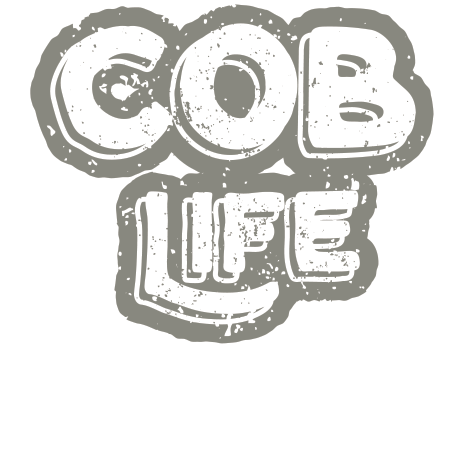
Cob Houses,
A Natural
Alternative
Cob is an earthen building material comprised of four simple natural materials: clay (binder), sand (strength), straw (reinforcement), and water (to mix).
Building with cob involves using the hands and feet to mix together ingredients. Cob can be used to build a wood fire oven, a bench, or sculptures in a way that is similar to sculpting with clay. In particular cob is useful as a building material for homes.
How Cob is Mixed
STEP 1. Add Clay
Clay is added to a tarp
STEP 2. Add Sand and Water
Sand and Water is added to the clay
until desired consistency is reached

STEP 3. Add Straw
Straw is added to the mixture
STEP 4. Form Walls
The mixture is then divided up into loaf shaped
“cobs”. The cobs are then stacked and
sculpted to form walls.
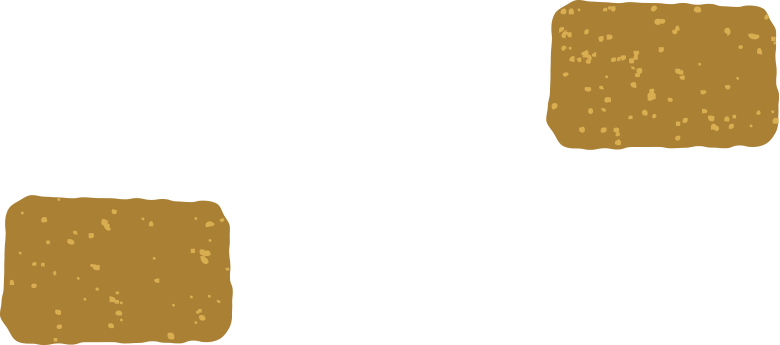
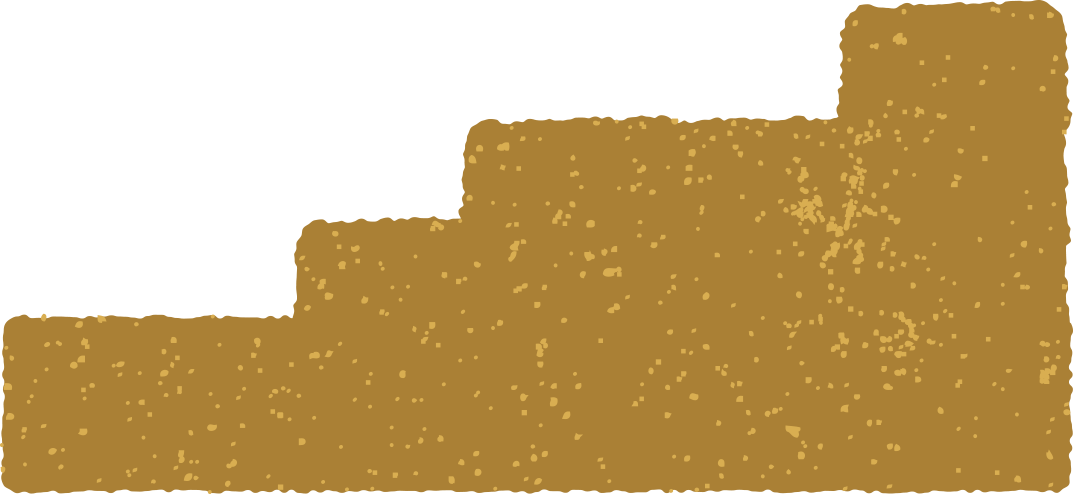
A Brief
History of Cob
Unbaked earth is one of the oldest building materials on the planet; it was used to construct the first permanent human settlements around ten thousand years ago. Because of its versatility and widespread availability, earth has been used as a building material on every continent and in every age.
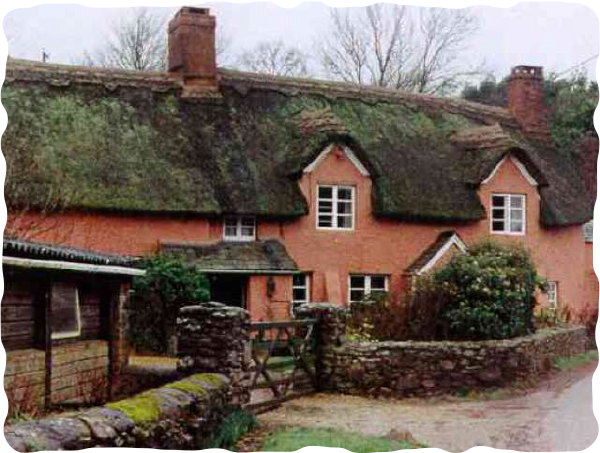
Cob in England
The word cob comes from an old English root meaning a lump or rounded mass. Cob building arose in England by the 13th century and became the norm in many parts of Britain by the 15th century. It remained that way until industrialization and cheap transportation made brick widely available in the mid-1800s. Cob was particularly common in southwestern England and in Wales, where the subsoil was a sandy clay and other building materials such as wood and stone were scarce.
Thousands of comfortable and picturesque cob homes in England have been continuously occupied for many centuries and now command very high market values. In the late 1990s an estimated twenty thousand cob homes remained in use in the county of Devon alone. Cob cottages, with their thatched roofs are now valued as snug, historical, and picturesque homes.
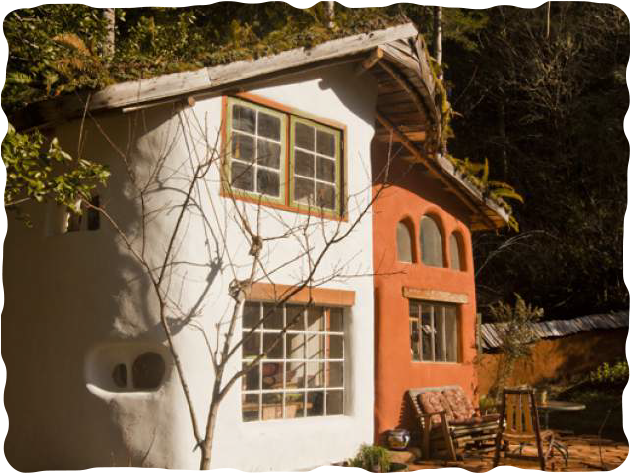
Cob Comes to
the United States
In the early 1990s Ianto Evans and Linda Smiley began building some of the first cob houses in the United States. Inspired by a research trip to Ireland and Wales studying traditional cob homes and experience building fuel-saving cookstoves in Guatemala, Evans and Smiley built some of the first american cob homes in the state of Oregon. With recent rises in the price of lumber and increasing interest in natural and environmentally safe building practices, cob is enjoying a renaissance in the United States.
Frequently
Asked Questions
Why haven’t I heard of cob before?
Cob is a recent arrival in the United States. Except for adobe in the Southwest, earthen building is virtually unknown here. In other parts of the world, cob and similar techniques have been popular for millennia. Throughout Western Europe, many of the picturesque stuccoed or whitewashed buildings are actually made of cob. In England there are tens of thousands of comfortable cob homes, many of which have been continuously inhabited for over 500 years. The durability and comfort of these valuable houses has sparked a renaissance in traditional cob centers such as Devon, where cob homes are again being built.
How long will a cob house last?
Cob as we know it originated in Wales and southern England. Many of these homes are over 500 years old! With proper design and regular maintenance, a cob home can literally last for centuries.
Why doesn’t it wash away in the rain?
Cob is very porous and can absorb a tremendous amount of water without softening. In fact, unless it is completely submerged, cob will never just “melt”. Cob is very resistant to weathering, and because of its porous nature, it withstands long periods of rain without weakening. However, left unprotected, a cob wall exposed to the elements will wash away over a long period time. Too much exposure is best avoided by the "boots and cap" strategy: wide roof eaves to protect the walls and an impervious foundation. Beyond that, an exterior plaster finish will protect the integrity of the wall from any rain that blows sideways.
Isn’t it cold and damp inside?
Winter visitors to cob buildings in Oregon often comment on how warm and dry they feel. Cob walls one to two feet thick provide immense thermal mass and adequate insulation, ideal for passive solar construction. Cob structures require little additional heating in winter and remain cool and comfortable on hot summer days. As it is fireproof, cob can be used for building ovens, stoves and chimneys. A popular design is a cob bench or bed heated by the flue of a wood-burning stove.
Is it dirty inside?
No. Once the inside of an earthen building is plastered there is no more dust or dirt than you would find in any other building. In fact, the plasters used in cob buildings are often the same ones used on the plaster and lath walls of older wooden homes. If you want smooth white walls you can still have them with cob.
Will termites eat the straw out of my cob?
No. There is nothing in cob that termites are interested in.
Does cob work in humid climates?
Cob is a form of earthen building developed in the British Isles, a very wet area famous for beautiful mists and vicious storms. Yet the native cob buildings in these places have withstood centuries of harsh weather and still remain in use today.
Is cob earthquake proof?
No building system is earthquake proof under every seismic condition. However, parts of the Great Pyramids and the Great Wall of China are made of earth. The oldest inhabited structure in the U.S., Taos Pueblo, is earthen construction. A cob mansion in Nelson, New Zealand has survived without a crack, two major earthquakes which destroyed the town around it. In South Yemen, in a fault zone, there are Medieval earthen houses 13 stories high. Since a cob building is one monolithic unit reinforced by straw, it has no weak straight-line mortar joints, making it stronger than brick or block. The curve and taper common with "Oregon cob" walls make them even stronger.
I have never built anything. Can I build my own home?
This is something only you can truly answer. Many people who start out with no experience build incredibly beautiful, one-of-a-kind homes. If you are unsure, a workshop is a great place to start. While learning the basic skills for yourself, you will likely meet new friends who will be the first to line up when you need help on your own project.
Does cob building require an expert?
Absolutely not! Once the basics are understood, cob building is amazingly simple. For many people building their own house is a wonderful experience. The materials for building a cob house are very inexpensive and the skills for assembling them are easily acquired. For that reason cob can offer you the opportunity to build a unique home for very little money if you are willing to do the work yourself.
For some people it may be better to hire a great deal of help and to hire a professional to oversee the construction. If you can afford to pay cash for the construction of a house and do not relish physical labor or if you want a large and complex design, then hiring a professional may be the best path for you.
How large can cob houses be built?
Just like with any other house, you can make it as big as you can afford (in money or in time.) Cob homes typically require less square footage, because cob homes are usually built in rounded shapes, which offer far more useable space than square buildings.
There are 7-story earthen homes in the Middle East. Cob can go big! The follow-up question, however is always the same: ”How big of a house do you really need?” This question is meant to provoke both practical and philosophical consideration. It is an important question to be able to answer before taking on a building project. As Ianto Evans once said: “It is far better to live in a small finished house than a large unfinished one.”
Because cob homeowners generally do most of the work themselves, they usually choose to keep their houses to a modest size. One of the great things about cob is that if you decide later that you need more room you can just make an addition or build another cottage next door for the kids.
How much will building a cob home cost?
If you are willing to do the work yourself, the materials are, as they say, are ‘dirt cheap.’ That said, it is safest to assume that the cost of your stunning, one-of-a-kind cob is roughly equivalent to building a stick-frame, nondescript rancher: Approximately $150-$200 per sq ft. The materials (sand, clay, straw etc.) are notably less than what you would expect to pay with traditional building methods (i.e lumber, cement, plywood etc.), but mixing and building with cob is very labor intensive and hiring workers can add up quickly. Learning how to do the work yourself at a workshop, or enlisting the help of others through work parties, workshops, friends and family are all ways to help reduce your outflow of cash.
